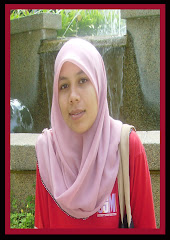http://www.asiacommunityservice.org/transport20forum/memorandum_teng_hock_nan.pdf
Memorandum Regarding Accessible Buses For Disabled Persons To: YB Dato’ Dr Teng Hock Nan
From: NGOs In Penang Together With A Coalition Of 18 NGOs Under The Barrier-free Environment And Accessible Transport Group (BEAT) And Individuals
This memorandum is prepared by Peter Tan
• Recognise that disabled persons are consumers who have the right to the same services as others
• Take immediate steps to incorporate the needs of disabled persons in all planning and decision making
• Ensure that all buses are non-step buses to allow easy access to all persons
• Work with the local authorities to ensure that all bus stops be made accessible to benefit all persons
• Consult and involve disabled persons in all policies affecting them
• Make known the Short Term and Long Term Action Plans with specific time frames and goals ( e.g. 5 Year Action Plan, 10 Year Action Plan ) to achieve 100 % barrier free buses for all within the set time frame
Below, we outline the essential points we want included to make public buses accessible to all:
• People require access to transport in all parts of Penang to participate in economical, educational, social, cultural, religious and political activities
• The vast majority of disabled persons live throughout the island and the mainland
• Public transport must be accessible to all, not only to people who can walk
• All bus stations and bus stops shall be accessible to all persons including disabled persons
• Walkways leading to bus stations and bus stops shall be accessible
Safety
• Pedestrian crossings shall be provided in the vicinity of bus stations and bus stops, and shall be accessible and appropriately indicated with signs
• Shelters shall be provided at all bus stops
• All bus stops shall have sufficient lighting to ensure safety for all commuters
Signage
• Signs shall be clear, visible and easily read by people with low vision and people with learning disabilities
• Bus timetables shall be provided in large print, and at a level to ensure that all people can read the information
• Signs bus stops used by buses for several routes, buses shall use fixed stops so that people, especially the visually impaired and those with wheelchairs, can queue in advance at the correct stop
• At large bus stops, approaching buses shall be announced by number and destination, both audibly and visually
• Changes and delays in bus arrival and departure times, including information of number and destination, shall be displayed by audio and visual means
Toilets
• Bus stations shall have accessible toilets
Buses
External signs
• Buses shall be prominently labeled with the international symbol of accessibility
Accessibility
• Buses shall be of the non-step type, with ramps to allow easy access
• Ramps shall be made of strong, durable material, and be designed to ensure their safe use for both manual and electric wheelchairs
• Ramps shall not be designed in ways that obstruct the casters (small front wheels)
• Ramps shall have a maximum gradient of no more than 1:12 to ensure safe and convenient access and exit for wheelchairs
• Doors shall be wide enough for manual and electric wheelchairs
Inside buses
• There shall be sufficient space inside buses to ensure full maneuverability of manual and electric wheelchairs
• There shall be sufficient space to park wheelchairs inside the bus
• Priority seats shall be clearly labeled
Safety
• There shall be a four-point strap-type tie-down to secure wheelchairs and a restraining system for wheelchair occupants
Communication
• Bells or buzzers shall be positioned at a level to enable their use by a person in a wheelchair
• Bells and buzzers shall be lit for people with hearing impairment
• Approaching bus stops shall be visually displayed.
Driver responsibilities and training
• Drivers shall insist that people move to make space to allow people in wheelchairs to move into position and to secure wheelchairs
• Drivers shall not move the bus until they are assured that the wheelchair is secured
• Drivers shall ensure that people with vision impairment, pregnant women, the elderly, and others with special needs have the opportunity to be seated
• Buses shall carry first-aid kits
• Drivers shall be trained to use first aid kits
• Proper training of drivers shall be provided with the involvement of disabled persons
This is by no means an exhaustive list. We not only want accessible buses but we also want such facilities to be safe. One point that we want to highlight is that accessible buses can be used by all, but non-accessible buses can only be used by a certain segment of society and deprive those with mobility impairments from using it.
RapidKL will be launching accessible bus service in June 1, 2007. There is no reason why RapidPenang cannot do the same. Whatever excuses to not include the needs of everyone in this new bus network is unacceptable and infringes on the rights of disabled persons to accessible public transport.
Fifty years after the Nation’s independence, disabled persons still cannot move around freely not through the fault of their impairments but because policymakers do not have the foresight and sensitivity to make public amenities inclusive and accessible to all.
With this we trust we have explained clearly why an accessible public transport system is so crucial to disabled persons, especially wheelchair users. We also trust that you will do the right thing by ensuring that the 150 buses that will be put into service in Penang on August 1, 2007 are fully accessible for all.

















































